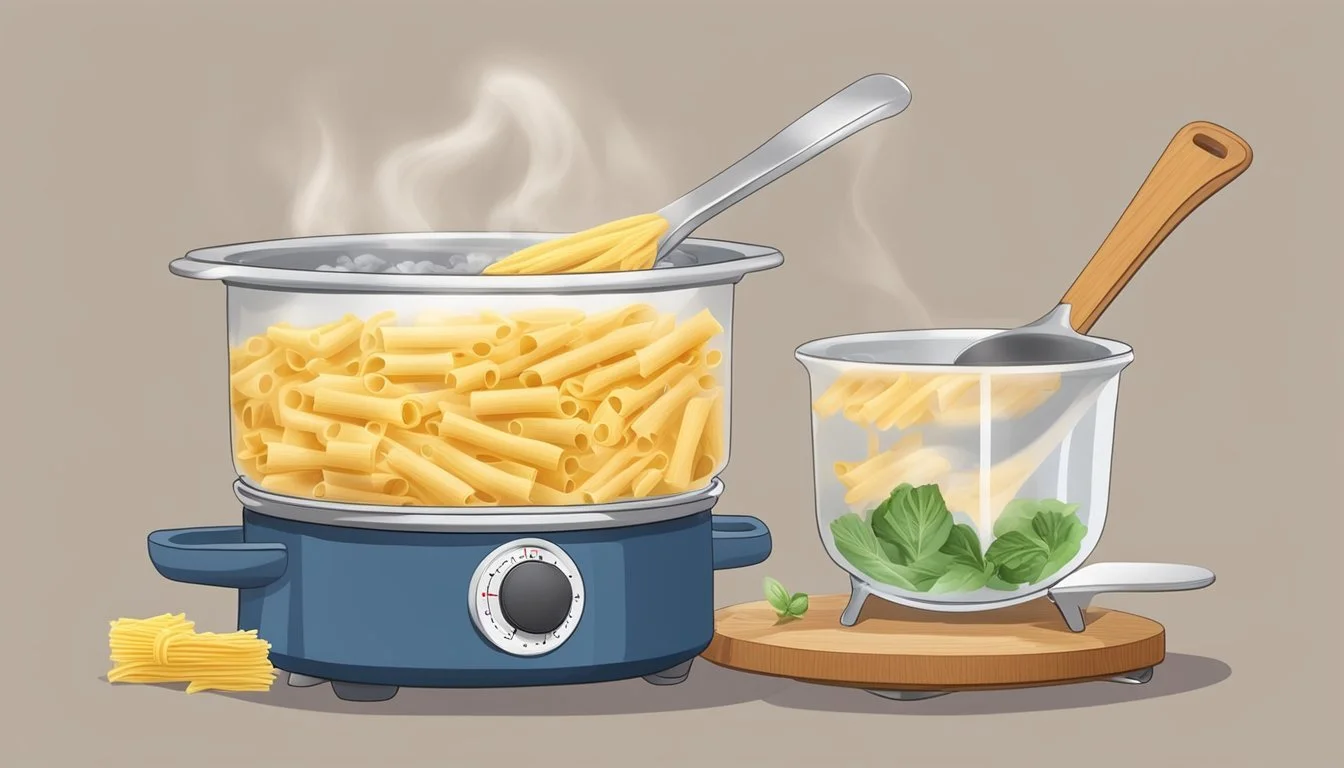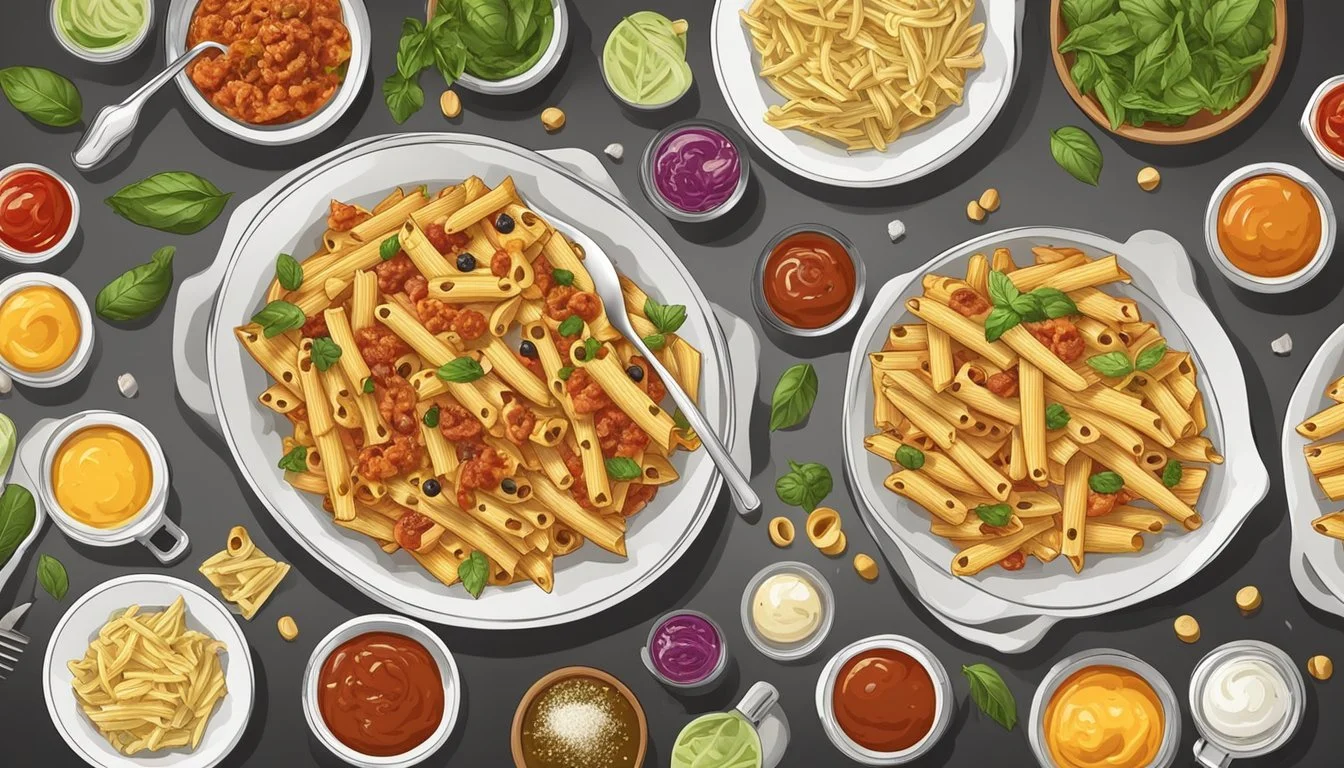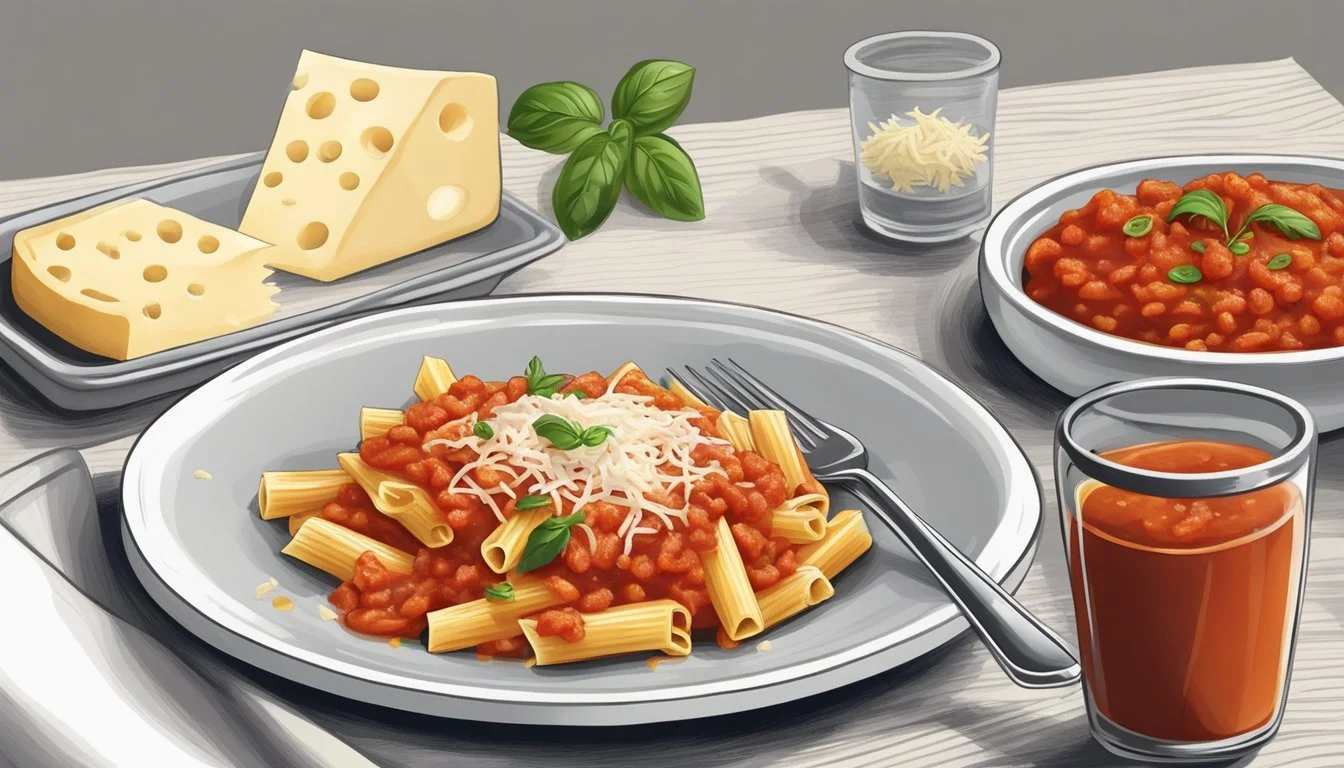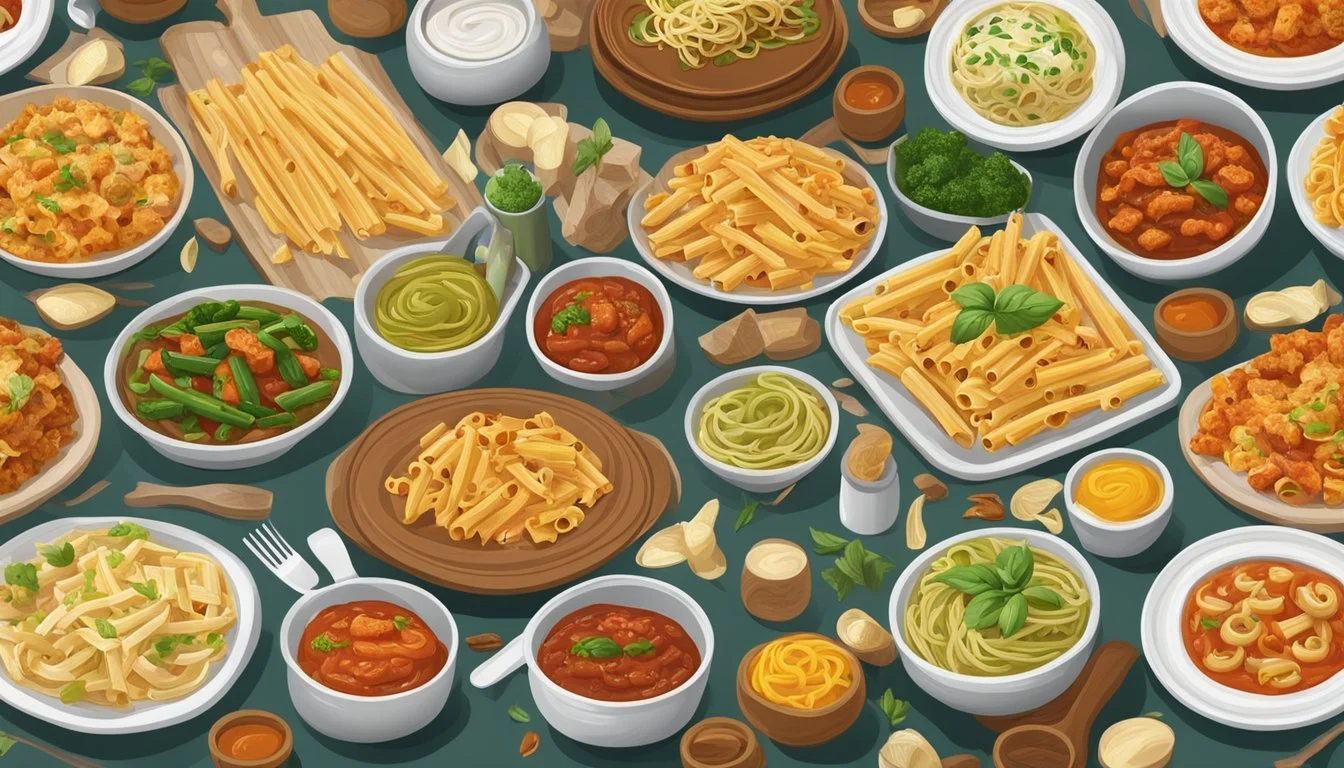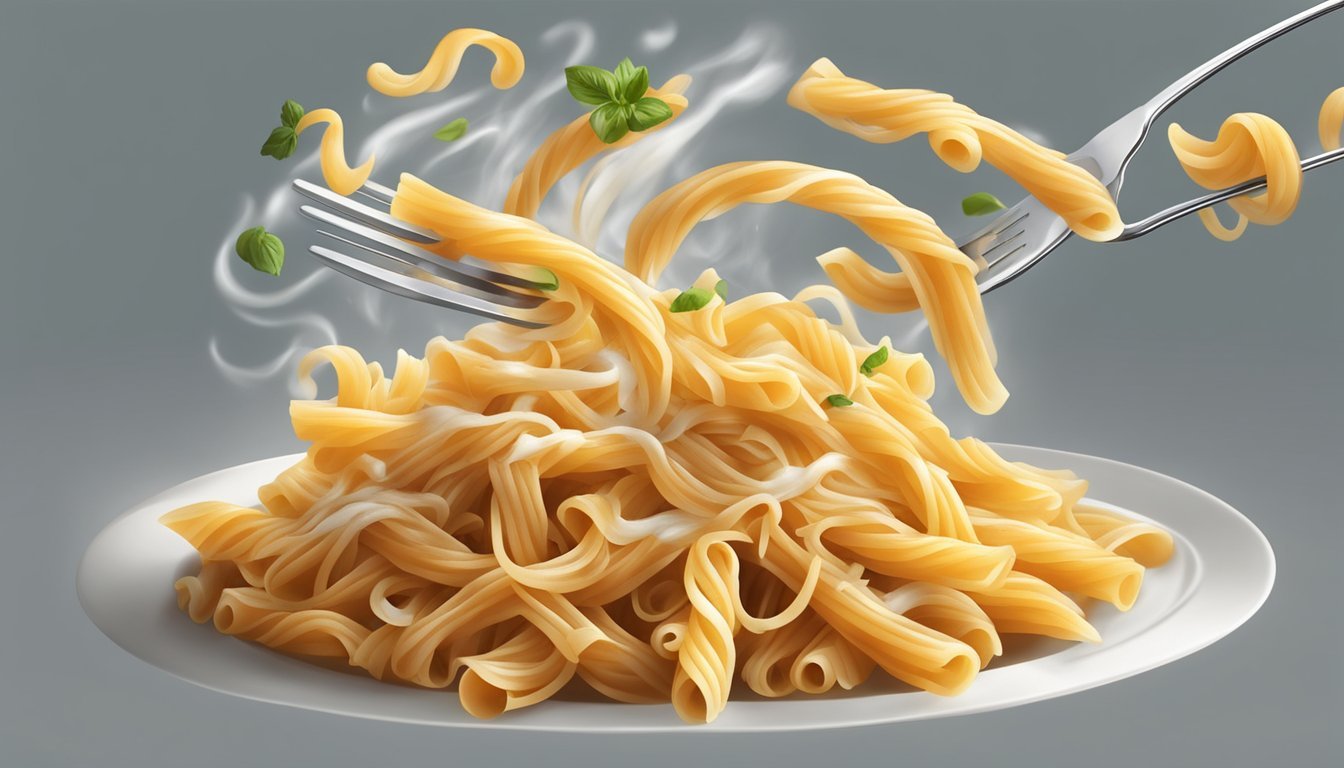How Do You Eat Ziti?
Mastering the Art of Enjoying This Classic Pasta Dish
Ziti, a type of pasta (What wine goes well with pasta?) that is often overlooked in favor of its more popular relatives like spaghetti or penne, deserves its moment in the culinary spotlight. This tube-shaped pasta, with its smooth texture and substantial bite, is exceptionally good at holding onto sauces, making it a favorite for hearty meals. Dining on ziti can be an experience that ranges from a simple, buttery toss to the more elaborate, cheese-laden baked ziti, a classic Italian-American casserole.
Baked ziti in particular stands out as a beloved dish for its comforting layers of pasta, rich meat sauce, and melted cheese. Chefs often prepare it by first partially cooking the ziti to ensure it maintains the perfect texture after baking. The pasta is then combined with a flavorful tomato-based sauce, sometimes interspersed with ricotta or layered with mozzarella and Parmesan cheeses. It is baked until the cheese bubbles and browns, transforming the dish into a warm, inviting meal that beckons family and friends to the table.
Eating ziti, especially when baked, can be as informal or festive as the occasion demands. It's typically served in generous portions, scooped from the baking dish onto plates or into bowls, allowing diners to appreciate the caramelized cheese topping and savory sauce mingling with the tender pasta. Whether enjoyed as a weeknight dinner or as the centerpiece of a feast, ziti provides a satisfying and crowd-pleasing option that is as versatile as it is delicious.
What Is Ziti?
Ziti is a type of extruded pasta that comes in the shape of long tubes. Traditionally associated with the regions of Campania and Sicily in southern Italy, ziti is similar in concept to macaroni but is distinguished by its length and typical smooth surface.
A signature characteristic of ziti are their hollow, tube-like structure, which allows them to hold and absorb sauces well. They fall into the medium-sized category of pasta shapes and are commonly used in both baked dishes and with hearty sauces.
The dimensions of ziti make it distinct from other pasta varieties:
Length: Approximately 25 cm (9.8 inches) long
Diameter: Wider than the similar penne or rigatoni.
While ziti can be used as is, they are often broken by hand into smaller pieces before cooking – a process that can help the pasta better integrate into certain recipes.
Penne, a close relative to ziti, is characterized by its pointed ends and ridged surface. Rigatoni, wider than penne, similarly has ridges but, unlike penne, has square-cut ends. Both of these pastas share the hollow center trait with ziti, making each of them a good candidate for robust and creamy sauces.
One of the most classic preparations for ziti pasta is "Ziti al Forno," a beloved baked dish layered decadently with flavorful marinara sauce and creamy mozzarella cheese. This preparation highlights ziti's capability to support and enhance rich, complex flavors in baked pasta dishes.
Essential Ingredients
When preparing ziti, the ingredients chosen have a profound impact on the taste and quality of the dish. Each component, from the sauce to the cheese, and proteins, plays a vital role in creating an authentic and delicious baked ziti.
Tomato Sauce Choices
The base of any ziti is the tomato sauce; it binds the dish together. Options include a homemade sauce simmered with herbs and spices, or a robust marinara sauce for a quicker alternative. Some may prefer a plain tomato sauce, while others opt for a more seasoned approach with garlic and onion.
Cheese Selection
Cheese adds creaminess and depth. Baked ziti commonly features a blend of various types:
Mozzarella cheese: known for its excellent melting qualities
Ricotta cheese: provides creaminess
Parmesan cheese: offers a sharp flavor.
Each should be used judiciously to balance flavor and texture.
Selecting Your Proteins
Proteins such as ground beef, Italian sausage, or ground turkey add heartiness. Proteins should be cooked thoroughly and seasoned with salt and pepper to complement other flavors. Vegetarian alternatives can also be used.
Herbs and Spices
Herbs like basil, oregano, and parsley, along with aromatic spices such as black pepper and red pepper flakes, enhance the flavor profile. Fresh herbs are preferable for a vibrant taste, while dried herbs are acceptable for convenience.
Additional Ingredients
Other than the mainstays, baked ziti may include an egg to bind the filling, and water to adjust sauce consistency. This balance ensures the ziti remains moist throughout baking.
Optional Vegetables
Inclusion of vegetables like spinach or bell peppers contributes to both the nutrition and the texture. These should be pre-cooked to release excess water that can dilute the sauce.
Oil and Fats
The choice of fats, be it olive oil, unsalted butter, or a combination, impacts flavor and richness. Extra-virgin olive oil is a healthy fat that introduces a subtle, fruity flavor element to the sauce or the sautéing phase of prepping vegetables.
Preparation Basics
The key to a delicious baked ziti lies in cooking the pasta to just the right texture, creating a flavorful sauce, layering the ingredients correctly, and baking until the cheese is beautifully melted and bubbly.
Cooking Pasta to Al Dente
To ensure pasta that's cooked to al dente, bring a large pot of salted water to a boil. Add the ziti and cook according to the package instructions, usually for about 7-8 minutes, until it's firm to the bite. Drain the pasta and run it under cold water to stop the cooking process. The pasta will continue to cook in the oven, so it's crucial not to overdo it at this stage.
Creating The Sauce Mixture
For a rich and savory sauce, start by sautéing aromatic ingredients like garlic and onion in a bit of oil until they're softened. Then, add tomato sauce and let it simmer to marry the flavors. Season the sauce with herbs and spices as per your preference—common additions include basil, oregano, and a pinch of salt. Some recipes also incorporate meat into the sauce for added texture and flavor.
Assembling The Layers
To assemble the baked ziti, one must thoughtfully layer the ingredients in a baking dish. Begin with a thin layer of sauce at the bottom to prevent sticking. Then, add a layer of boiled pasta, followed by a generous spreading of the sauce mixture. Sprinkle a layer of mixed cheeses, typically mozzarella and Parmesan, over the sauce. Repeat the layering process, usually ending with a final layer of cheese on top.
Baking To Perfection
Preheat your oven to the recommended temperature, often between 350°F to 375°F. Place the assembled ziti into the oven and bake until the cheese is bubbly and golden brown on top. This typically takes between 55 to 70 minutes, depending on the recipe and oven. Cover the dish with foil if the cheese browns too quickly, removing it towards the end to achieve that desirable crispy top layer.
Customizing Your Dish
Creating the perfect ziti dish is all about making choices that suit one's taste preferences and dietary needs. Each element can be altered, from the type of pasta to the sauce and mix-ins, providing a unique experience every time.
Alternate Pasta Choices
When it comes to pasta choices, ziti can easily be substituted to keep things interesting. Consider the following options:
Penne Pasta: A close cousin to ziti, its tube shape holds sauce well.
Rigatoni: With its ridges and larger size, rigatoni is ideal for meat sauces.
Macaroni: For a twist, use elbow macaroni for a more classic feel.
Shells: Large shells will scoop up sauce and fillings with each bite.
Each pasta shape offers a different texture and sauce-to-pasta ratio, which can alter the dining experience.
Adding A Meaty Twist
To enhance ziti with a meaty flavor, incorporate one or more protein options:
Ground Beef: It provides a classic, hearty addition to ziti.
Italian Sausage: For a spicier kick, add crumbled Italian sausage to the sauce.
Meat Sauce: Combine ground meats with marinara sauce for a rich, flavorful coating on the pasta.
When adding meat to ziti, ensure it's cooked thoroughly before layering it into the dish.
Vegetarian Variations
For those preferring a vegetarian option, there are ample ways to customize ziti without compromising on flavor:
Vegetables: Mix in sautéed mushrooms, spinach, or peppers.
Cheese: Combine different cheeses such as ricotta, mozzarella, and Parmesan for a creamy texture.
Marinara Sauce: Use a robust marinara sauce as a base and build layers of flavors with herbs and vegetables.
These vegetarian alternatives provide an enjoyable way to enjoy ziti while adhering to meatless dietary preferences.
Cooking and Storage Tips
Properly reheating, freezing, and storing ziti not only extends its lifetime but also retains its delicious taste. Adhering to these guidelines ensures the pasta bake maintains its quality whether it's enjoyed immediately or saved for later.
Reheating Guidelines
When reheating leftovers, one can utilize either the oven or microwave. For oven reheating, preheat to 350°F and place the ziti, covered with foil, inside until it's heated through, about 20-30 minutes. If using a microwave, cover the ziti with a microwave-safe lid or plastic wrap to avoid splatters and reheat on medium power, checking and stirring periodically for even warmth.
Proper Freezing Techniques
To freeze ziti:
Cool: First, allow the casserole to cool to room temperature.
Portion: Divide into portions if desired for single servings.
Cover: Wrap the dish tightly with both plastic wrap and aluminum foil, or transfer to an airtight container.
Label: Mark with the freezing date.
Freeze: Place in the freezer. Properly wrapped ziti can be frozen for up to 3 months.
Storing Leftovers
Leftover ziti should be stored in the refrigerator within two hours of cooking to prevent bacterial growth. The steps are simple:
Cool: Bring down to room temperature.
Transfer: Place in an airtight container.
Refrigerate: Keep in the refrigerator, where it will stay fresh for up to 5 days.
Make-Ahead Strategies
For make-ahead ziti:
Assemble: Prepare the casserole as directed until the final baking step.
Refrigerate: Cover the unbaked casserole with plastic wrap and then foil, and refrigerate it for up to two days before baking.
Bake: When ready to eat, bake according to the recipe's instructions, adding additional time if necessary to account for starting from a cold state.
Serving Suggestions
Pairing baked ziti with the right sides and presenting it appealingly can enhance one's dining experience. This section provides insights into complementary sides and presentation ideas that are perfect for this beloved pasta dish.
Complementary Sides
A well-chosen side dish complements the rich and savory flavors of baked ziti. Two categories stand out:
Salads: A simple green salad or a Caesar salad offers a fresh contrast to the hearty pasta. The crispness of the greens and the tanginess of the dressing provide a refreshing balance.
Breads: Garlic bread, with its aromatic and buttery profile, is a classic choice. Its crispy texture and rich flavor make it an excellent accompaniment to the cheesy, tomato-based casserole.
Vegetables also serve as a nutritious and colorful addition to the meal. Steamed or roasted vegetables like broccoli, green beans, or a medley of seasonal options can lighten the meal, offering a pleasant textural contrast to the soft pasta bake.
Presentation Ideas
Baked ziti, being a comforting pasta bake, should be presented in a way that highlights its inviting layers and melty cheese. The casserole can be served directly from the oven to table in an attractive baking dish that emphasizes its homestyle appeal. By garnishing with fresh herbs like basil or parsley just before serving, one can add a pop of color and a hint of freshness to the dish.
When plating individually, portion the baked pasta with a side of garlic bread or salad for a well-rounded presentation. Place the garlic bread on a separate small plate or neatly beside the pasta to prevent it from becoming soggy. The salad can be served in a small bowl or on the side of the plate, dressed lightly to maintain its crisp texture.
Ziti in Different Cuisines
Ziti, the tube-shaped pasta often associated with hearty and rich dishes (What wine goes well with rich dishes?), has become a canvas for a range of Italian-American culinary expressions, particularly in the form of baked ziti.
Italian-American Variants
Baked Ziti is a quintessential dish within the Italian-American cuisine, transforming simple ingredients into a comforting staple. This beloved version layers ziti pasta with a robust meat sauce, seasoned with garlic and herbs, and a medley of melted cheeses, typically including mozzarella and Parmesan. The mixture is then baked to golden perfection, resulting in a dish that is both indulgent and satisfying. The heart of Italian-American homes often smells of garlic and tomato sauce as this dish comes out of the oven, with the tangy aroma of Parmesan lending an unmistakeable invitation to the table.
Health Considerations
When eating ziti, one must be mindful of the meal's nutritional components to maintain balance and health.
Balancing The Meal
The key to a healthy ziti dish lies in the balance of ingredients. Often, ziti recipes involve a combination of pasta, cheese, and a protein source such as ground turkey. To enhance the nutritional value of the meal, one should consider the following:
Vegetables: Integrating a variety of vegetables can not only boost the nutrient content but also add fiber, which is essential for a balanced diet. Options like spinach, zucchini, or bell peppers can be mixed into the sauce or layered within the dish.
Proteins: Choosing lean proteins, for instance, ground turkey or chicken over higher fat proteins like sausage, can reduce overall calorie and fat intake while maintaining the satisfaction factor.
Cheese: Opting for part-skim mozzarella and low-fat ricotta can lower the dish's fat content without sacrificing flavor. Measuring cheese portions helps manage calorie intake.
Pasta: Opting for whole-grain pasta adds more fiber and nutrients to the meal compared to traditional white pasta.
Salad: Accompanying the ziti with a fresh salad dressed in a light vinaigrette can provide a refreshing contrast and additional vegetables, enhancing the meal's overall healthfulness.
By thoughtfully assembling these components, diners can enjoy a hearty, satisfying meal that supports their health goals.
Conclusion
Baked ziti stands out as a classic dish in American cuisine, renowned for its rich flavors and comforting presence on the dinner table. This homemade pasta recipe brilliantly combines the essentials of cheesy indulgence with the practicality of an easy-to-make meal. Ziti noodles, with their substantial size, are perfect for layering with various cheeses and sauces, ensuring that every bite is as flavorful as it is satisfying.
While alternatives such as rigatoni or penne can be used, ziti is the traditional choice. Its tube-like shape allows for sauce and cheese to cling to the noodles, creating a delightful texture contrast when baked to perfection. In making this dish, chefs stick to a straightforward layering method; starting with ziti, followed by cheese, sauce, and often a sprinkling of herbs for enhanced aroma.
A genuine baked ziti is often celebrated for its golden-brown cheesy crust, a result of careful baking which is definitive of a well-prepared baked pasta dish. Cheeses like mozzarella and ricotta, integral to the dish, provide a creamy and stringy quality that elevates the dish’s overall appeal.
When serving baked ziti, one should remember that its simplicity is a significant part of its charm; a dish that comes together with ease while still being a staple at gatherings for its universally loved characteristics. They can rest assured that presenting baked ziti at any table will resonate with both the tradition of pasta lovers and those seeking the heartwarming pleasure of an American classic.
FAQs
How do you ensure the ziti retains its starch content and flavor when cooking?
One should use a large pot of salted water for cooking ziti. The salt enhances the flavor, while the ample water helps maintain the pasta's starch. It's crucial to stir the pasta occasionally to prevent it from sticking and cook it until it's al dente, typically 8-10 minutes.
What kind of cheese is recommended for baking ziti?
For a flavorful baked ziti, a combination of mozzarella for its meltiness and ricotta for creaminess is often used. Parmesan is also added for a sharp flavor, and some recipes may include Pepper Jack cheese for a spicy touch.
How do you properly store and reheat ziti?
To store ziti, one must first let it cool to room temperature. Then, they can place it in an airtight container and refrigerate it. To freeze, wrap the container tightly with foil. When reheating, they can use an oven to retain the pasta's texture. For refrigerated ziti, reheating at 375°F until heated through is usually sufficient.
Can you substitute rigatoni for ziti?
Rigatoni can be substituted for ziti as they are similar in shape and size. The substitution maintains the dish's integrity due to the pasta's ability to hold sauce and cheese.
What herbs best complement ziti dishes?
Fresh herbs like flat-leaf parsley can elevate the dish, adding a burst of color and fresh flavor. One can sprinkle chopped parsley on the baked ziti just before serving for the best impact.



